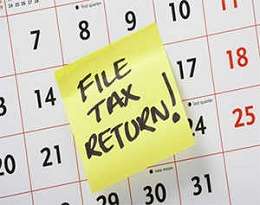TAX BILLS: Everyone gets a bill when they file their tax returns. Those who file their returns online will be able to see it:
- As soon as they finish filling in their return. It will be inside the section called ‘View your calculation‘. Note that you will see the bill before you submit the final calculation.
- In the final tax calculation as well. But, it may take up to 3 days to be available in your account after submitting the return.
People who send in a paper tax return will get their bill through the post sent to them by HM Revenue and Customs.
Note: There may be times when you need evidence of your ‘SA302 tax calculation‘. The response form shows the last 4 years and most often used by self-employed workers and those applying for a mortgage.
This guide on understanding how Self Assessment tax bill works is also available in Welsh language (Cymraeg).
Understand Your Self Assessment Tax Bill
A tax bill will also include any tax owed for the last tax year. This ‘balancing payment‘ will show up on a Self Assessment tax bill.
If the balancing payment is over £1,000, the bill may include an extra payment towards next year’s bill. This is the ‘payment on account‘ system.
What happens if you make payments on account last year? In this case, you should deduct any payments on account you made last year towards the current year’s bill. That is the way to work out how much you owe.
You can check the payments on account made last year. After logging in to your account you should then select ‘View statements’.
Note: HM Revenue and Customs set deadlines and penalties for Self Assessment tax returns and bill payments.
Tax Bill Payment on Account
As a rule, self-employed workers will make ‘payments on account‘ twice a year. They are 2 installments paid in advance towards their tax annual bill.
 The payments include Class 4 National Insurance but exclude Capital Gains Tax and student loan repayments. They get paid in the balancing payments.
The payments include Class 4 National Insurance but exclude Capital Gains Tax and student loan repayments. They get paid in the balancing payments.
As a rule, you must make two (2) payments on account each year unless:
- The last Self Assessment tax bill you had was under £1,000.
- Your payments have covered over 80% of all the tax you owe. This can happen for several reasons. The bank may have already deducted the interest on savings or payments made through your tax code may have covered it.
Payments on account should take place before midnight on the 1st of January and the 1st of July. Each separate payment is half of the tax bill for the previous year. You may need to make a ‘balancing payment’ if there is any tax left to pay afterwards.
Note: All balancing payments must get paid before midnight on January 31st of the next year.
Payments on Account Example Calculation 2021/22
A tax bill for the 2020 to 2021 tax year is £3,000. The 2 payments on account made last year were £900 each (£1,800 in total).
The total tax to pay before midnight on the 31st of January 2022 would be £2,700.
This includes:
• The ‘balancing payment‘ of £1,200 for 2020 to 2021 tax year ( £3,000 minus £1,800).
• The first payment on account of £1,500 (half of 2020 to 2021 tax bill) towards the 2021 to 2022 tax bill.
The second payment on account of £1,500 is due before midnight on the 31st of July 2022.
If the tax bill for 2021 to 2022 tax year is over £3,000 then a ‘balancing payment’ is due before January 31st 2023.
How to Check HMRC Payments on Account
If you log in to your online account you will see your Self Assessment statement. Select ‘View statements’ and you will be able to check:
- Which ‘payments on account’ you made already.
- Which payments you must make towards your next tax bill.
How to Reduce Payments on Account
What if you know the tax bill will be lower than the previous year? In this case you can make a request for HM Revenue and Customs to reduce payments on account. You can contact HMRC to ask for a reduction either by:
- Logging into your online account and then selecting ‘Reduce payments on account‘.
- Send the form ‘Self Assessment: claim to reduce payments on account SA303‘ to your tax office.
HMRC Payments on Account Overpayment (underpayment)
When the tax bill is higher or lower than expected you could pay the wrong amount. HM Revenue and Customs will send you a tax refund if you make an overpayment. They charge interest if you make an underpayment.
Budgeting for Your Self Assessment Tax Bill
Note: The short video [1:49 seconds] will help you with HMRC Self Assessment. It explains more about how to budget for your tax bill (e.g. via Direct Debit payments).

